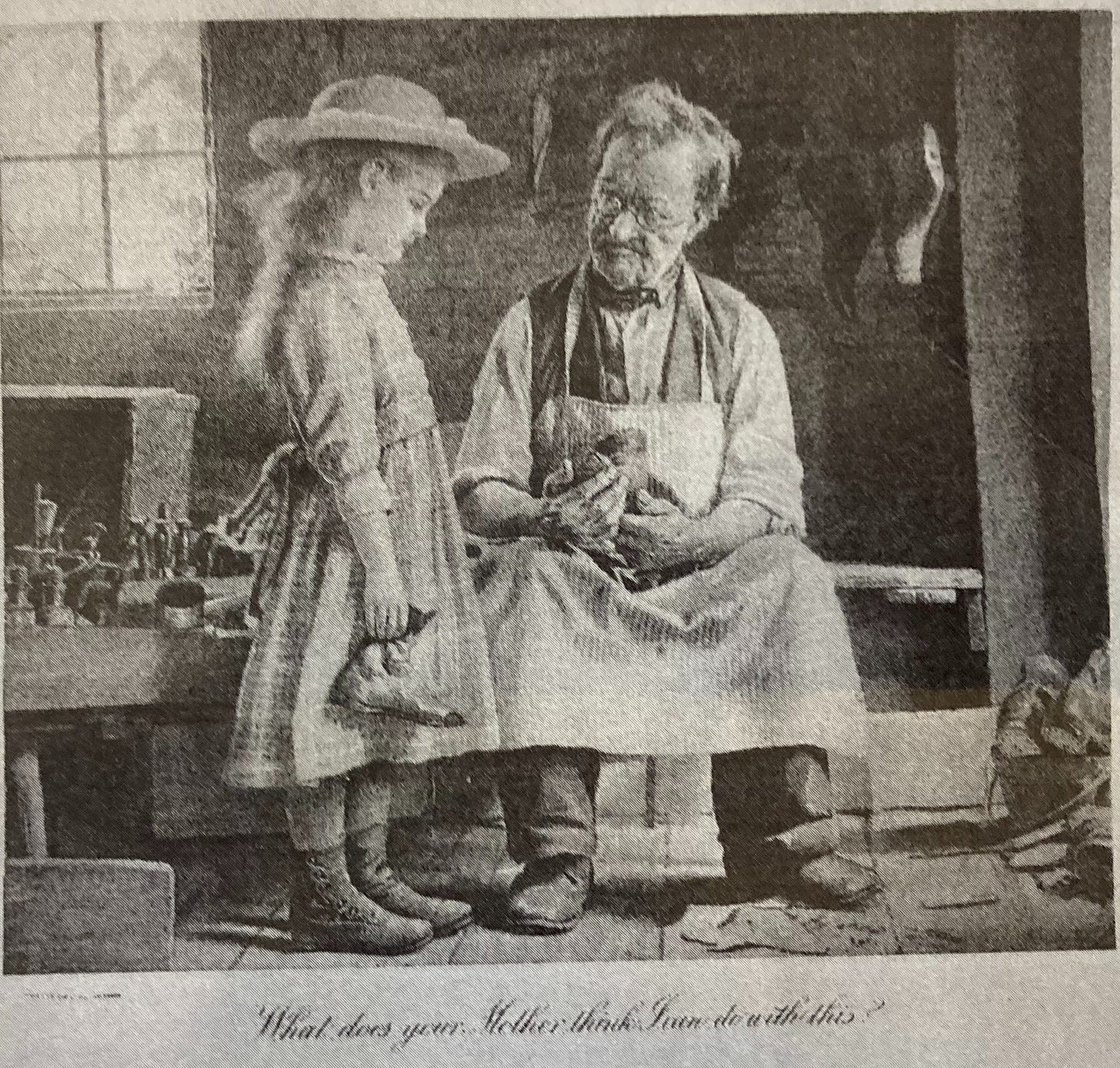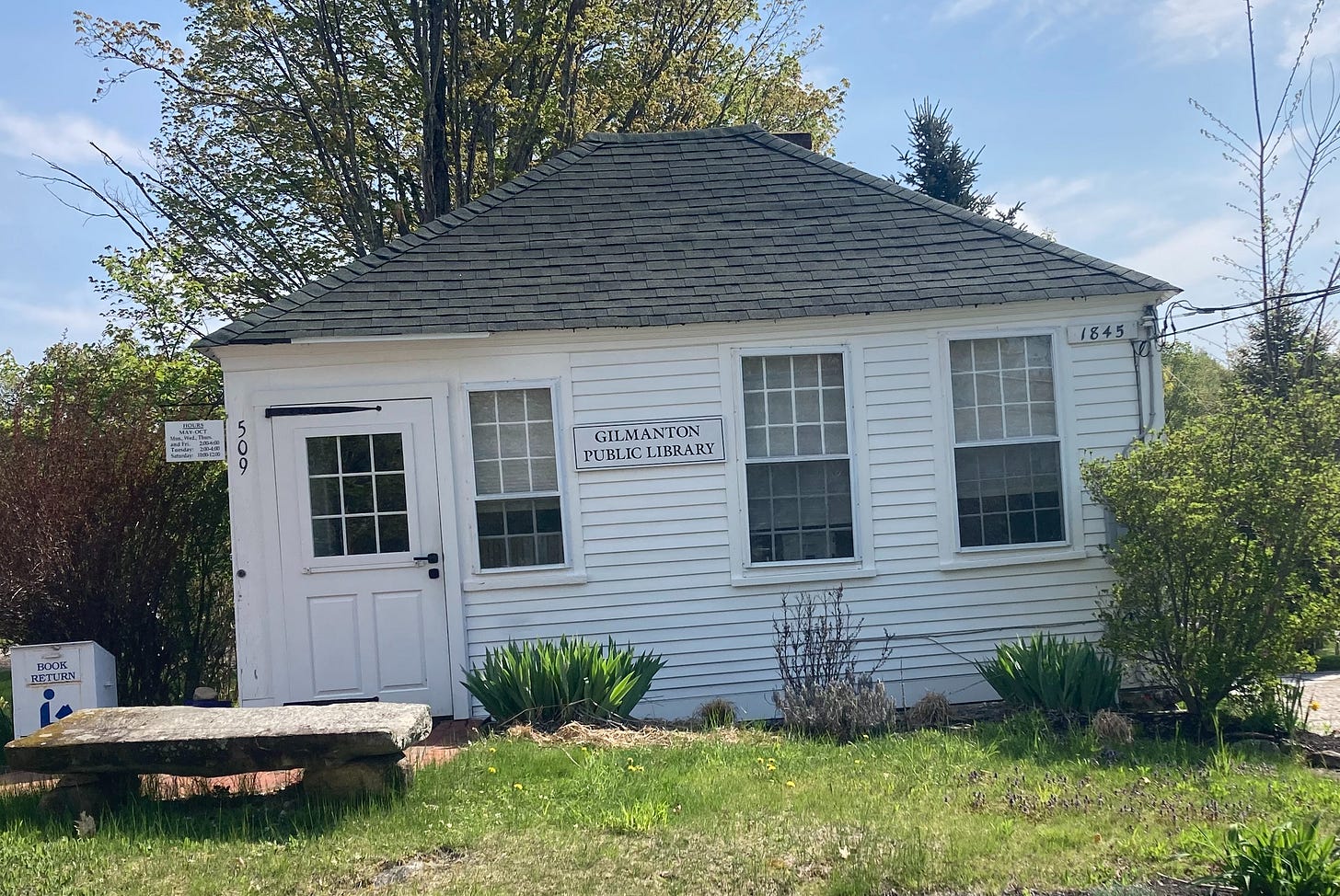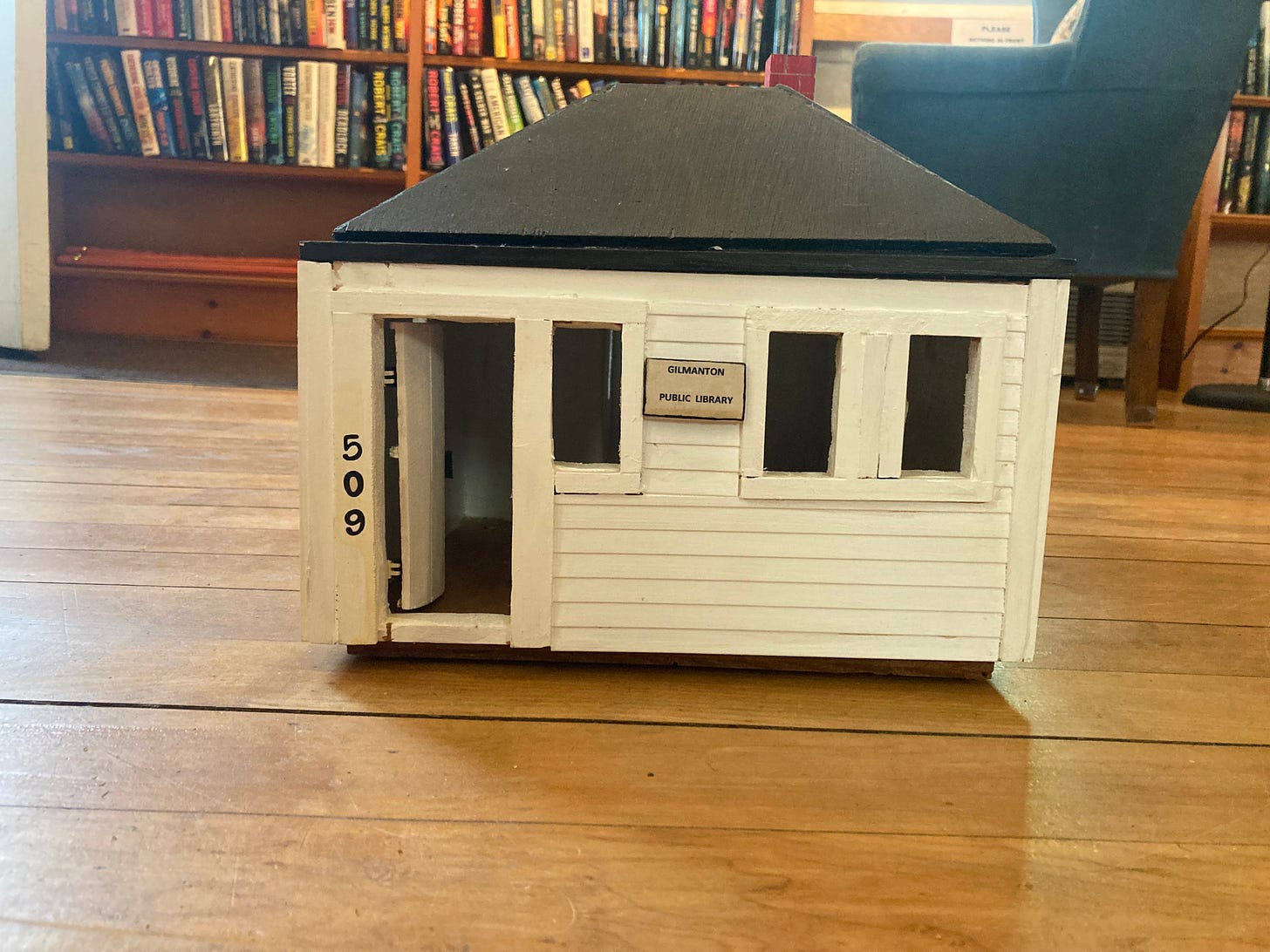The Cobbler Who Saved The Library
A nineteenth century shoeman, Ira Pennock, just helped Gilmanton preserve an historic building

Like a novel, a small town needs characters. When I was a kid in the 1970s, there was this freelance handyman here in Gilmanton, Razor Brown. Every year on the Fourth of July, he would lean into his status as the local bumpkin and walk in the parade barefoot, in overalls, wearing a straw hat and toting a jug of moonshine. His beard was long and wild, and his old hound dog walked beside him, leashed by a stray piece of rope.
Long before Razor, there was Ira Pennock, a diminutive and disheveled cobbler who, from 1846 into the 1890s, repaired shoes in a small bungalow that now houses the Gilmanton Corner Public Library. In recent years, Pennock has been all but forgotten. But last month his name became newly relevant. The New Hampshire Department of Natural & Cultural Resources added the Corner Library to the State Register of Historic Places, and it did so after the library’s trustees submitted an application that positioned Pennock as the central character in the building’s 179-year history.
Ancient news clips suggest that Pennock was a curmudgeon–and also a person whose daily life was shaped by the class dynamics of his day. Unfashionable, relatively powerless but always involved in the hubbub of nineteenth century Gilmanton, he labored next door to the elite Gilmanton Academy, a now defunct private school, and the male students there “bothered him to death,” according to one Academy grad, Henry W. Parker.
Once, when Pennock tried to stop the Academy’s boy bullies from forming a gauntlet outside a chapel door, so that they could harass girls, “They gathered branches of blackberry bushes and threw them at old Pennock,” writes historian Harold Ehrensperger, “some smashing in his eyes.”
“One morning,” the Manchester Union Leader wrote, “he awoke to find a sleigh fastened to the top of his kitchen chimney. It was removed by the old man with great difficulty.”
Pennock’s shop had–indeed, it still has–a distinctive barrel-shaped front door, and, as the building sat just 50 or so yards from the Gilmanton Academy, students often gathered about this charismatic door. “When the group would get too numerous and boisterous,” the Laconia Democrat reported in 1880, there came “the brave appearance of the good-natured occupant [Pennock] with hammer in one hand and last in the other, telling them to go to H-.”

But even as Pennock was the Academy’s whipping boy, he was also its mascot–and so beloved that, after his death, Academy grads raised funds for his gravestone. Their patronizing regard for a working man, sometimes fond, sometimes hostile, wasn’t unique. Down in the Boston area, the nineteenth century students of Harvard had their own Pennock equivalent. John Lovett (1833-1906) was an impoverished Irish emigre who, in 1858, began selling fruit in Harvard Square. Soon dubbed “John The Orange Man,” he became such a Harvard fixture–and such a Crimson sports fan–that students would not bet on a game unless John The Orange Man was present. The poet Henry Wadsworth Longfellow, a Harvard professor, frequently hosted John for dinner, and Harvard’s Class of 1881 gifted him a wheeled cart, for selling his wares.
Like John The Orange Man, Pennock emerges from long-ago news stories less as a nuanced individual and more as a caricature. We read that he had “a very quick temper” and that he was “in hot water most of the time.” We hear him described as “that most picturesque personage.” But we have only the faintest details about his life. A news story tells us that he and his wife, Nancy, lived in a “little old house” near his shop and we know that, heartbreakingly, they lost their only child, a daughter named Charlotte, when she was 23. I wish we knew more.
Pennock’s place of business still stands, though. The tiny 544 square feet building has been a millinery shop, a harness shop and a printing office. It once housed a tailor and was briefly a French school, the teacher being, according to the Democrat, “polite and genteel.” It has functioned as a public library continuously since 1911 and it’s experienced flashes of fame, largely thanks to the 1956 blockbuster novel, Peyton Place, by Gilmanton resident Grace Metalious.
Peyton Place is about, ahem, murder and skullduggery in a small New England village, and when TV reporter Barbara Walters came to town to report on Grace in the early 1960s, the book was still so hated locally that the Corner Library refused to stock it. With much righteous fanfare, Walters bought a copy, signed it and tried to donate it to the library. The gift was refused, and contempt for Grace lingered at the Corner Library for decades. In 1999, when I interviewed Marion McIntyre, who’d just finished a 23-year run as librarian, she invoked a tired local story about Grace’s alleged promiscuity, telling me that on one warm July day Grace showed up at the Gilmanton Corner Store in a "long mink coat. There was nothing on underneath," McIntyre said, "and she went into the phone booth and flashed herself!”
I am happy to report that in recent decades the Corner Library has changed its stance on Grace. When I stepped into the building recently to meet Sue Roberts, the library trustee who wrote the historic register application, she had just ordered a lesser-known Metalious novel, The Tight White Collar, off Amazon. “Now we have all of her books,” Roberts said as we sat down at a small table. “And we should have all her books. People here have a right to read their local authors. A library is a place to learn.”
Roberts, a 72-year-old retired police officer, grew up in Gilmanton and served as the town’s first female cop. Her dad, Monk Munsey, drove a paver for Pike Industries for nearly half a century, and she began checking books out of the Corner Library in 1955, when she was three. She gravitated, early on, to the National Geographics shelved there. “I was precocious,” she says. “I read Sigmund Freud when I was 11. I read everything they had in this library.”
As a kid, Roberts went to school with Grace Metalious’ youngest daughter, Cindy, and always felt that Gilmantonians were cruel to Grace. “She was nice to me,” Roberts remembers, “and I think most of the stories about her were made up. She was a poor French-Canadian woman from Manchester. She was naive and so people were mean to her.”
Last year, as she began doing research about Ira Pennock, Roberts sensed that, like Grace, he was mistreated. “Why was he just forgotten and ignored by the history books?’ she asked. “He was an old Yankee, a classic working class New Englander, and we never hear about those people. We hear about the attorneys and the big landowners, but they weren’t the lifeblood of the town.
“As I researched Ira,” Roberts told me, “I kept thinking about him. I wondered about the time that he lived in. I asked myself, ‘What was he like?’”
In Roberts’ view, all reading projects are guided by such questions, and every trip to the library is a research campaign. “You can learn so much in a library,” she said. “When you read a book, you can see places you’d never get to visit. You can meet people you’d never otherwise meet. For those of us born and raised in a small town, a library is an important place. It’s a window into a larger world.
“This library here”--Roberts gestured at the 3,500 books stacked all around her–”it’s special to me, and I wanted to protect it. I also wanted to make sure that people remembered Ira Pennock.”
Now that the state has officially recognized the Corner Library as an historic place, Roberts has managed to achieve both her goals. And in Ira Pennock’s old cobbler shop, the joy is almost palpable. “I’m so happy,” Roberts told me.
On July 4, immediately following the 10 a.m. parade, I will be at the Gilmanton Corner Public Library, signing copies of my new book, Unbound: Unforgettable True Stories From The World of Endurance Sports.








Beautiful story; lovingly told...